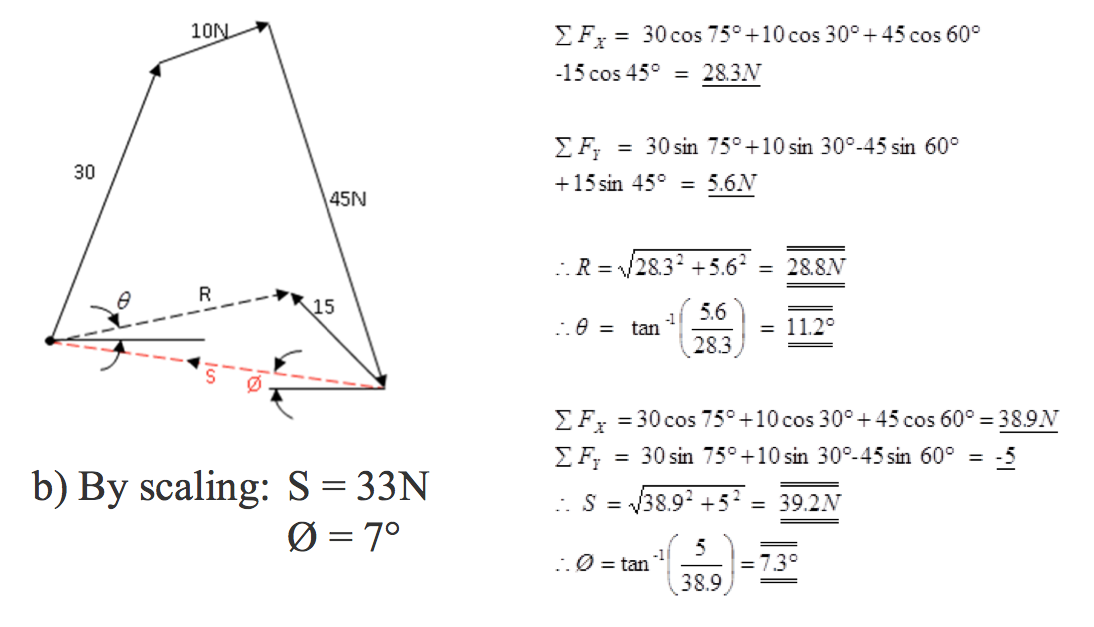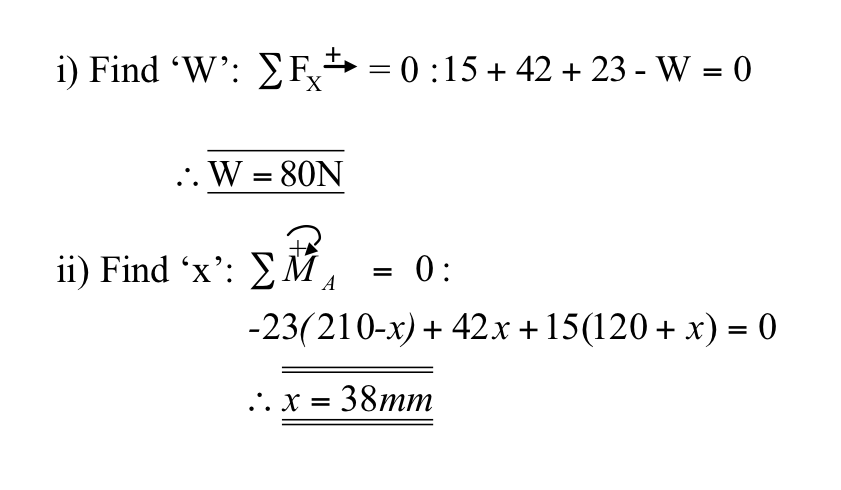02
-
- Do Not Click on the 'Main Menu' button, this action will erase the entire page !
-
- The forces shown in Figure Ex.1 are concurrent and in equilibrium. Determine the magnitude of the forces P and Q:
•analytically;
•graphically using vector diagrams.


2 Dimensional Force Equilibrium
- Worked Example No.1
- The forces shown in Figure Ex.1 are concurrent and in equilibrium.
Determine the magnitude of the forces P and Q:
i) analytically;
ii) graphically using vector diagrams

- The forces shown in Figure Ex.1 are concurrent and in equilibrium. Determine the magnitude of the forces P and Q:
-


2 Dimensional Force Equilibrium
- Worked Example No.2
- The forces shown in Figure Ex.2 are concurrent and in equilibrium. Determine the magnitude of the forces P and Q:
i) analytically;
ii) graphically using vector diagrams.

-
- i) Find the resultant of the system of concurrent coplanar forces shown in Figure Ex.3 by constructing a vector diagram.

- ii) Replace the 15N force with a new force such that the force system will be in equilibrium.

2 Dimensional Force Equilibrium
- Worked Example No.3
- i) Find the resultant of the system of concurrent coplanar forces shown in Figure Ex.3 by constructing a vector diagram.
ii) Replace the 15N force with a new force such that the force system will be in equilibrium.

-
2 Dimensional Equilibrium: The Moment of a Force
- Moment is the turning effect of a force about an axis and is defined as the product of the force and the perpendicular distance from the reference point to the line of action of the force. Figure 5 shows a force of magnitude F acting at a distance d from end point A.

- As stated previously, a rigid body is in equilibrium when the resultant of any force system acting on it is zero, and that the sum of force components acting horizontally and vertically are zero [Eqns.(1) and (2)]. Hence in addition to this, the sum of all moments acting on the body must also add to zero, i.e.
 Eqn.(4)
Eqn.(4)
- Hence for 2-dimensional equilibrium, a rigid body has 3 degrees-of-freedom in a plane, i.e. two of translation (displacement) and one of rotation, and the body is in equilibrium when all three are fully restrained. Summarising, the conditions that are required to satisfy the static equilibrium of a 2-dimensional structure are:

-

2 Dimensional Equilibrium
- Worked Example No.4
- A hand brake lever has a force of 110 N applied to it as shown in Figure Ex.4. Calculate the resisting pull in the hand brake cable at B and the direction in which it acts.

-
2 Dimensional Equilibrium
- Worked Example No.5
- A vertical structure is subjected to the loads shown in Figure Ex.5.
If the structure is in equilibrium, determine:
i) the load ‘W’;
ii) the vertical distance ‘x’.


-


2 Dimensional Equilibrium
- Worked Example No.6
- A mobile telephone mast is held in position as shown by the free-body diagram in Figure Ex.6.
Calculate the tension in the cable AB when, due to wind loading, a force of 1.3 kN is applied at the position and in the direction shown.

-
Sample Problem sheet 2_1
Sample Problem sheet 2_2
Sample Problem sheet 2_5
Sample Problem sheet 2_7-8